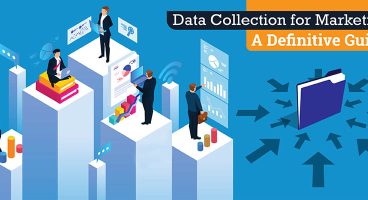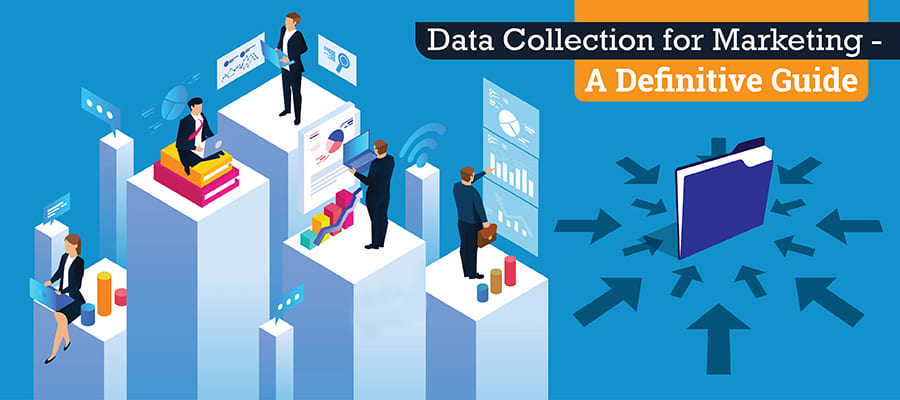
In today’s data-intensive landscape, marketers cannot move ahead with a strategy without backing it with data-based insights. The requisite data is obtained through a systematic process which is called data collection. This guide aims to take you through various niceties of data collection so that you can understand the concept in detail.
Enabled by its high standards of work and executional accuracy, Hitech BPO Services has been successfully delivering quality marketing data collection services to global brands, including Fortune 100 and Fortune 500 companies, cutting across verticals – eCommerce, retail, healthcare, manufacturing, utilities, logistics and transportation etc.
Understanding data collection
Data collection is the process of fetching requisite data in the required quantity from identified sources. The data is gathered to drive requisite analysis so that insights generated from the analysis can enable marketers to frame effective marketing strategies.
What is data collection used for?
Below, we discuss some common applications of data collection.
New product development
For conceptualizing a new product, analyzing data on similar existing products – your own or competitor’s – is a prerequisite. Data collection is a means to obtaining this data and allows companies to bring in missing attributes and features into new products.
Ad campaign
Regular examination and analysis of primary and secondary data sources help marketers to improve the efficiency of their existing ad campaigns and frame efficient fresh campaigns.
Product launch
To get an understanding of the target audience, marketers collect demographics and psychographics. This allows them to complement the new product development strategy with a powerful product launch strategy.
Customer satisfaction
Marketers regularly collect data on customer sentiments to get an insight into product/services’ performance. Data collection helps them resolve queries surrounding customer satisfaction and product/service effectiveness.
How does data collection benefit marketers?
When good practices in data collection are observed, it enables marketers to reap benefits, some of which are:
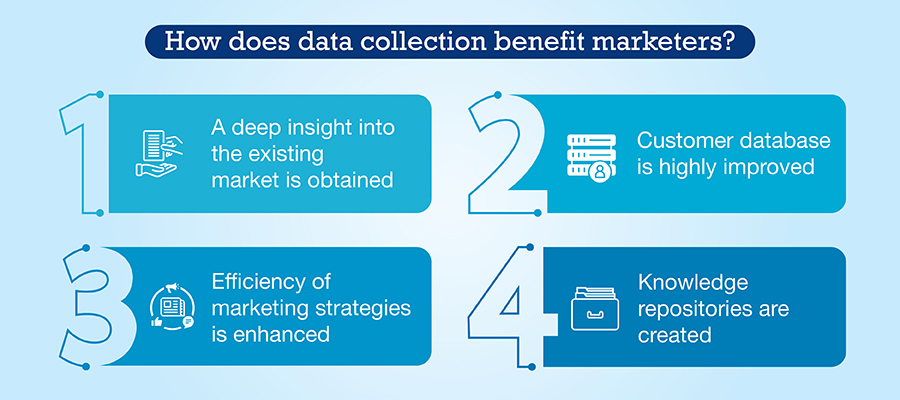
A deep insight into the existing market is obtained
How can marketers know about how the product or services are faring? How companies can rank themselves in the competition? Right data collection answers all these questions. Data collection thus gives marketers to get the market’s complete picture – customer composition, existing products, customer preferences, and channels, etc.
Customer database is highly improved
Data collection enriches your existing CRM database; Data collected at different points of time allows you to analyze trends. Regularly updating the marketing database also works as a key step towards ensuring accurate analytics execution.
Efficiency of marketing strategies is enhanced
Data-backed decision-making is the norm of the day, and why not, for data brings to the fore all necessary insights that are crucial to drive right decisions. Data collection, therefore, works as an agency that improves marketers’ strategy-framing efficiency.
Knowledge repositories are created
By continually adding quality data, data collection assists marketers in creating strong knowledge repositories. The knowledge management framework proves useful to address similar problems and to train stakeholders in future.
Data collection instruments
As technology advanced, new trends started emerging, and so today diverse data sources exist. Here are some important data collection instruments marketers commonly use.
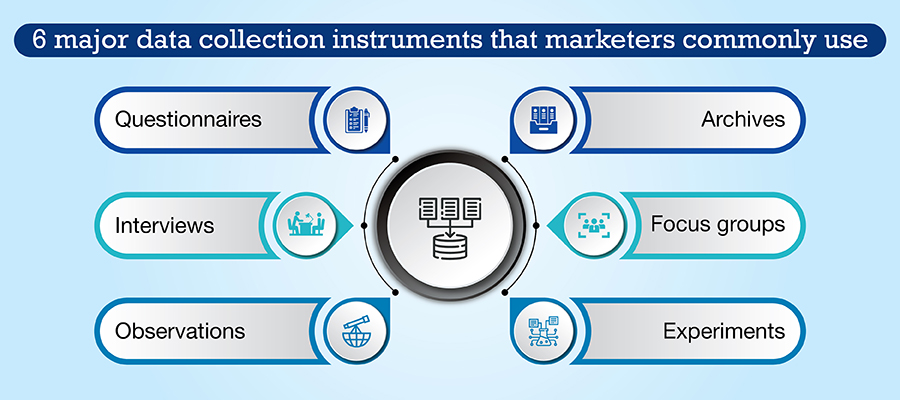
Questionnaires
Certainly, without questionnaires data collection is impossible. Why? Because to get responses from the target audience, you need questionnaires, and data extraction from secondary data sources becomes easy when you have pre-defined questions. The nature of questions amongst other related factors are purely governed by the context.
Here are certain characteristics of a good questionnaire:
- The questionnaires should have an optimal mix of open-ended and close-ended questions.
- The questions must be arranged in a logical sequence so that it is easy-to-implement for the collector and easy-to-understand for the respondent.
- Questions must be kept simple and they shouldn’t lose their meaning.
- The questionnaires should enable the effective gathering of demographics as well as psychographics equally well.
Interviews
A foremost tool in primary research, interviews involve two-way discussion between data collector/researcher and respondent.
Nowadays, Computer-Aided Interviewing (CAI) is used. Here, the computer starts with some questions to which respondents give their answers. Artificial Intelligence (AI) enables computers to put the follow-up questions based on the user response.
A challenge associated with interview-based data collection is that not every respondent records the responses equally well. While some respondents are honest, some respondents might be reluctant to answer and may record incomplete or incorrect responses.
Observations
Some data cannot be collected from people through explicitly questioning, and for extracting the data, observations stand out to be the best tools.
Observations can be direct or indirect. In direct observation, participants are aware of being noticed. The feeling of being continuously monitored may force participants to present themselves differently. So, here, it becomes difficult to cultivate true behavioral and emotional insights.
Indirect observations, more appropriately known as unobtrusive observations involve people as participants without them knowing that they are being observed. The good thing, in this case, is that participants behave naturally and researchers get to understand the sentiments accurately.
Observations are less hypothetical in nature, and wherever, nonverbal communication becomes important, observations become the ideal way to gather insights.
Archives
Archives are basically a collection of records or documents or even a data backup. They act as great secondary data sources. For instance, you are planning to launch a marketing campaign, and along with having firsthand data, now you also come across some old reports which contain data that was used to drive similar kind of campaigns. You study that data and use it in analysis to get useful insights.
Archives include resources such as published textual materials like books, journals, newspapers, and magazines, etc., government records and documents etc. Similarly, e-sources such as websites, blogs, social media feeds, and videos can be effectively used to extract needed data elements.
Focus Groups
In focus groups, people participate in groups, engaging in interactive discussions and participants come with spontaneous responses to questions. Focus groups are formed based on demographics that determine group size, participant profile etc.
The moderator who is the group leader explains the guidelines to all the participants and encourages a productive discussion. The aim is to get an insight into participant’s perceptions of the brand. Based on their past experiences, participants express their sentiments towards a product or a service.
Experiments
A part of causal research, experiments can be used to effectively drive cause and effect analysis. To give an example, for formulating pricing strategies or to coming up with the right product packaging, experimentation can prove to the right source of knowledge to drive corrective actions.
There are two types of experiments – laboratory experiments and field experiments.
In a laboratory experiment, the researcher validates if the desired conditions exist or not. Then, by controlling requisite variables and by manipulating them, the research examines the relationship between independent and dependent variables. In field experiments, evaluations are made in realistic conditions, though manipulation does happen but to a lesser degree as compared to that of laboratory experiments.
In certain situations, a particular data collection technique may not prove to be effective. To deal with such scenarios, multiple methods of data collection are combined so that collected data is accurate and comprehensive. Such Mixed-Method approaches highly improve the efficiency of market research.
Data collection procedure
Every data collection activity is directed towards a certain objective; so, methods applied differ from project to project, though the generic framework remains the same. Here, a generic step-by-step data collection procedure has been discussed as follows:
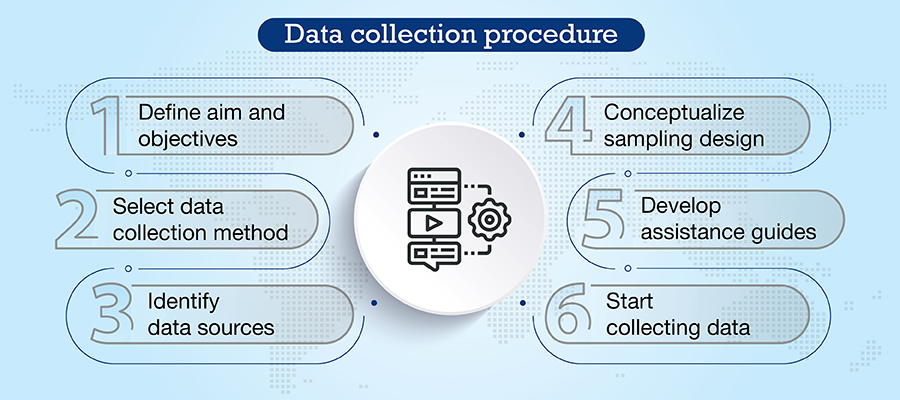
Define aim and objectives
First be clear about the aim of data collection for the given assignment and accordingly define broad-level objectives. The aim and the objectives will allow stakeholders to get familiarize with the intent of the study. Understanding of goals will allow you to precisely frame hypotheses in the context of your marketing assignment.
Select data collection method
Hypotheses will expose you to the right set of data collection methods that suit your context. If required appropriate mixed-method approaches should be employed. Follow standard literature (research papers, books, etc.) to get an idea on what combination suits best for the marketing problem at hand.
Identify data sources
Select the right data sources from all available data sources. Leverage correct secondary data sources optimally. Before a data source is selected, carefully study it. Remember, data sources being the cornerstone of data collection, a significant effort should be spent to select them.
Conceptualize sampling design
Use standard sample selection techniques and follow right sample size selection mechanisms to derive effective samples. The samples must correctly represent the population. Study literature and existing resources that match your context to understand how samples were derived and what sampling technique was used.
Develop assistance guides
All the operational definition must be clearly defined, so as to enable every stakeholder understand the meaning and importance of every variable/concept. Along with top-level executives, those working down the data collection pipeline – data collectors – must be familiar with the intricacies and guides to help them with the information.
Start collecting data
Select the right channels and begin data collection. Take into consideration factors like the comfort levels of target audiences and their channel preferences. For instance, if the target audiences are technology users, then email questionnaires or mobile surveys work the best. However, if target audiences are not tech-savvy, then go with face-to-face interviews.
How technology has been changing the landscape
Right from acting as a channel, a means of driving analytics, an advanced storage medium to an automated data capturing tool, technology has revolutionized every single aspect in data collection. In today’s competitive business scenario, if organizations do not appropriately leverage / incorporate technology in their data collection mechanisms, then they keep themselves from gaining strategic advantage.
Conclusion
Today’s data collection efforts cannot be based on static traditional structures; as a result, marketers need to keep adopting dynamic methods to ensure the required levels of efficiency. As the process continues to evolve with time, marketers must make every effort to harness the power of the technology.
Diverse data sources generating a variety of data have been arising, and people, preferring electronic channels, have been growing tech-savvy. Besides changing the character of the process, technology is minimizing personal interaction, thereby making the process of data collection remotely feasible.


